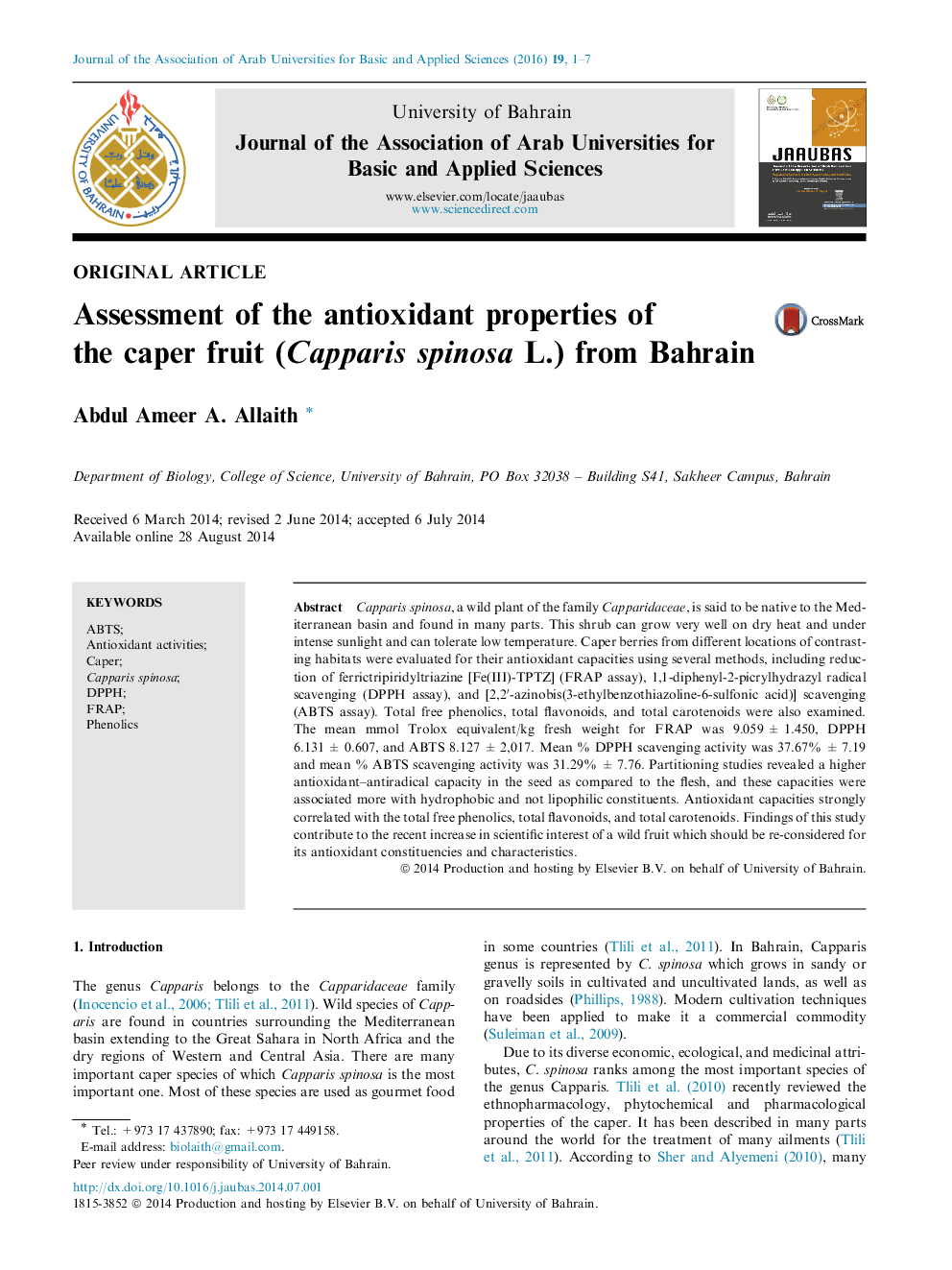| Article ID | Journal | Published Year | Pages | File Type |
|---|---|---|---|---|
| 1258306 | Journal of the Association of Arab Universities for Basic and Applied Sciences | 2016 | 7 Pages |
Capparis spinosa, a wild plant of the family Capparidaceae, is said to be native to the Mediterranean basin and found in many parts. This shrub can grow very well on dry heat and under intense sunlight and can tolerate low temperature. Caper berries from different locations of contrasting habitats were evaluated for their antioxidant capacities using several methods, including reduction of ferrictripiridyltriazine [Fe(III)-TPTZ] (FRAP assay), 1,1-diphenyl-2-picrylhydrazyl radical scavenging (DPPH assay), and [2,2′-azinobis(3-ethylbenzothiazoline-6-sulfonic acid)] scavenging (ABTS assay). Total free phenolics, total flavonoids, and total carotenoids were also examined. The mean mmol Trolox equivalent/kg fresh weight for FRAP was 9.059 ± 1.450, DPPH 6.131 ± 0.607, and ABTS 8.127 ± 2,017. Mean % DPPH scavenging activity was 37.67% ± 7.19 and mean % ABTS scavenging activity was 31.29% ± 7.76. Partitioning studies revealed a higher antioxidant–antiradical capacity in the seed as compared to the flesh, and these capacities were associated more with hydrophobic and not lipophilic constituents. Antioxidant capacities strongly correlated with the total free phenolics, total flavonoids, and total carotenoids. Findings of this study contribute to the recent increase in scientific interest of a wild fruit which should be re-considered for its antioxidant constituencies and characteristics.
